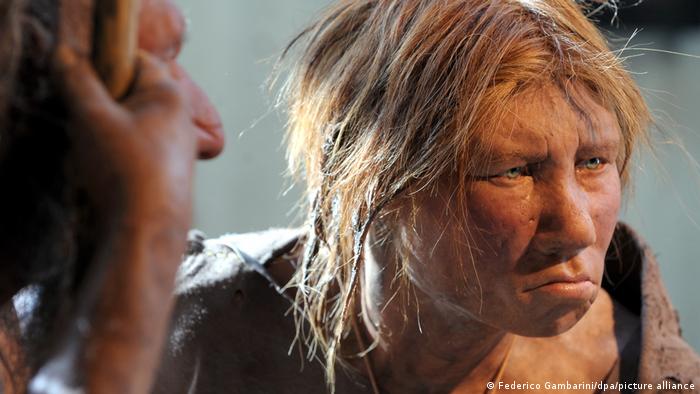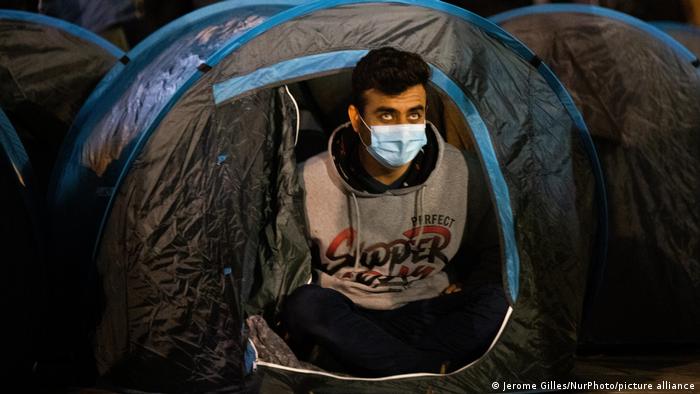© Bruno Mazodier/adaptation-institute.com/Insider A team of 15 volunteers lived together for 40 days underground in the Lombrives cave in the South of France.
15 people spent 40 days in a deep cave to study how humans could live without regular timekeeping.
The team leader told Insider about life in the experiment, which ended last month.
On April 24,
15 volunteers came out of a cave in the south of France. They had just spent 40 days underground, deliberately deprived of any means of tracking the passage of time.
This experiment, called
Deep Time, provided thousands of measurements to assess the effect of removing measured time on people's bodies, minds, and social interactions.
Insider spoke with Christian Clot, the team leader for this expedition. Here is what he told us about life in the cave.
Natural cycles were often longer than 24 hours
© Darwin Production/adaptation-institute.com A globe illuminates the main room where people lived in the cave Darwin Production/adaptation-institute.com
In the cave, all electronics had their clocks removed. There was, of course, no sunlight. This left people organizing their days by intuition.
They could complete tasks like taking scientific measurements, exploring and cleaning the cave, or cataloging insects during waking hours. The cave was mostly dark, apart from one living area that was kept illuminated.
People were told to sleep and eat whenever they felt like it. The only thing regulating the length of their day was their internal body clock and their interactions with others.

© Bruno Mazodier/adaptation-institute.com Teams working together would often eat together. Bruno Mazodier/adaptation-institute.com
Under these conditions, the volunteers had widely different cycles governing their activities and sleep.
By the end of 40 days, most volunteers had completed only 30 cycles, Clot told Insider. Precise measurements are still being analyzed, but this suggests that most people ended up with "days" that were more like 30 hours long rather than 24.
One woman's cycle was twice as long as normal, Clot told Insider. She only slept 23 times over the 40 days, which suggests that an average cycle was about 40 hours for her.
It was forbidden to wake people up

Darwin Production/adaptation-institute.com/Insider Tents in the dark "quiet zone" where people went to sleep. Darwin Production/adaptation-institute.com/InsiderPeople slept in tents in the "quiet zone." It was "absolutely forbidden to wake up someone else," Clot said. There were no alarms or devices to tell them how long they had slept. They simply woke up when they felt like it.
"During the first week in the cave, it was really hard to accept the idea that when I wake up, I didn't have to check my smartphone or my watch to see if I slept enough. I just have to listen to my body," Clot said.
"It was like a liberation, you know. It was like: Wow, amazing. I just have to listen to me!"
At the beginning of the experiment, that meant that the volunteers were completely out of sync, Clot told Insider.
"People were awake around the clock," he said.
However, by the end of the experiment, people had fallen into a rhythm and naturally started to wake up and go to sleep at times that worked for the group, Clot said.
"In an unconscious way, when people wanted to be together, they woke up at the same time," Clot said.
Volunteers swallowed a capsule which sent back measurements of their temperature

© Insider This pill is a thermometer that can be swallowed and send temperature readings, Christian Clot told Insider on May 4, 2021. InsiderOnce swallowed, the pill stays in the body on average for 3 to 4 days, depending on the person's physiology.
As it makes its way through the digestive tract, it sends temperature readings every minute, a spokesperson from the manufacturer, the French firm
BodyCap, told Insider.
Because the body's temperature changes during the day according to its internal clock, these measurements are useful to determine the effect of the experiment on the body.
The volunteers - seven women and eight men - also wore sensors to measure sleeping patterns, regularly took blood samples, monitored their brain waves, and tested their brain function by playing games with VR headsets.
Cameras were also constantly recording their interactions for later analysis.
"Thousands" of data points were collected during this experiment, Clot said. These are now being processed by 12 labs around the world, he said.
They had very little water to wash - and the cave was too humid to really bother
Darwin production/adapta The team collected water from an underground lake. Darwin production/adapta
The team used water from an underground lake for drinking, cooking, and hygiene.
Getting the water was "a bit hard," Clot said, so they used as little as they could.
Washing in the cave would not have been very pleasant anyway. The cave was cold - around 10 degrees Celsius (about 50 degrees Fahrenheit) - and humidity was at 100%.
They had bikes to generate electricity and tried to grow plants
© Bruno Mazodier/adaptation-institute.com Bikes were used to power a computer used to take measurements during the experiment. Bruno Mazodier/adaptation-institute.com
Asked if humans could survive underground for longer periods of time, Clot said, "we had water. The only thing you need is food."
"We tried to grow some vegetables. Some were growing nicely," Clot said, although they didn't have enough time to harvest them in the 40 days.
Standing bikes provided some exercise but were also hooked to a generator to produce electricity for computers while scientific measurements were being collected.
Everyone was shocked when the experiment ended

Bruno Mazodier/adaptation-institute.com The team together in the main living space of the cave Bruno Mazodier/adaptation-institute.com
When it was time to leave, the volunteers were surprised. They thought they had much longer, with most guessing that they were around 30 days in rather than the full 40.
Clot told Insider that they had imagined a lot of possibilities for what would happen in the cave. But "absolutely not" that their perceptions would have been off by as much as ten days.
By the time the team on the surface came to tell them the experiment was over, many of the volunteers were not ready to leave the cave and had to adjust to the idea mentally, Clot told Insider.
Some loved it down there and want to go back.

Darwin Production/adaptation-institute.com The team were emotional on the last day of the experiment Darwin Production/adaptation-institute.comReturning to normal life was hard in some ways,
Clot said.
In his case, it was challenging because he's had to do a lot of interviews since emerging from the cave, he said.
"I sometimes think: Wow! It was so easy in the cave," he told Insider.
At least three of the 15 volunteers would happily go back, he said. As for him, he would like to do it again, if only to repeat the experiment.
But before then, the team plans to test other extreme living conditions and will be going together to the Brazilian rainforest and Siberia, Clot said.




























.webp)


.jpeg)
.jpeg)
.jpeg)
.jpeg)
.jpeg)

.jpeg)